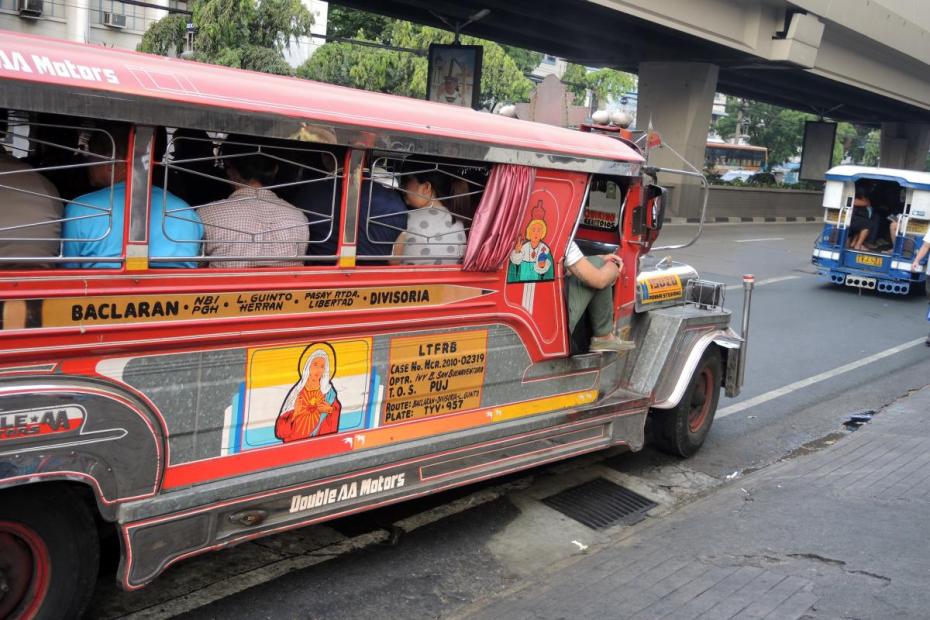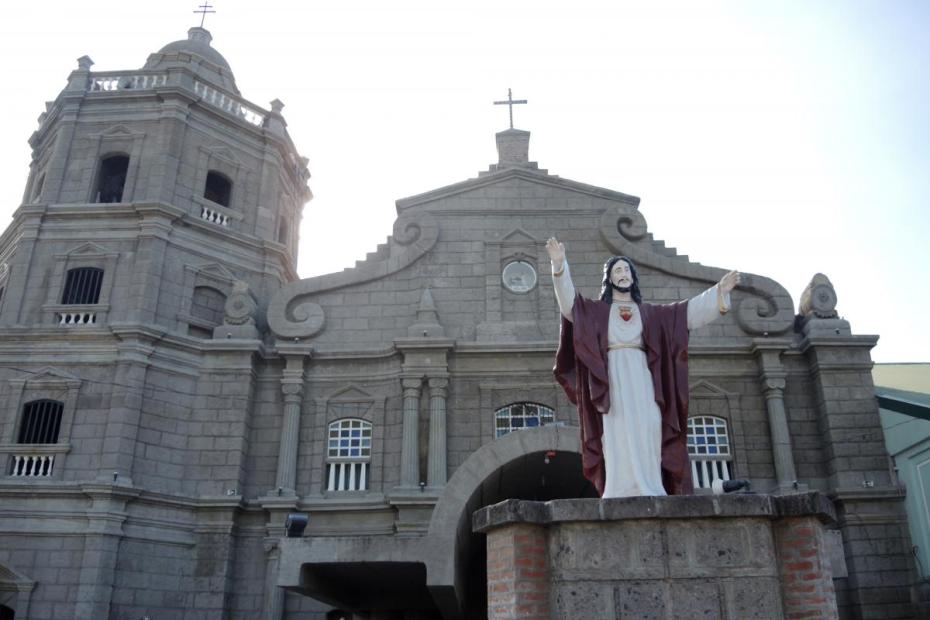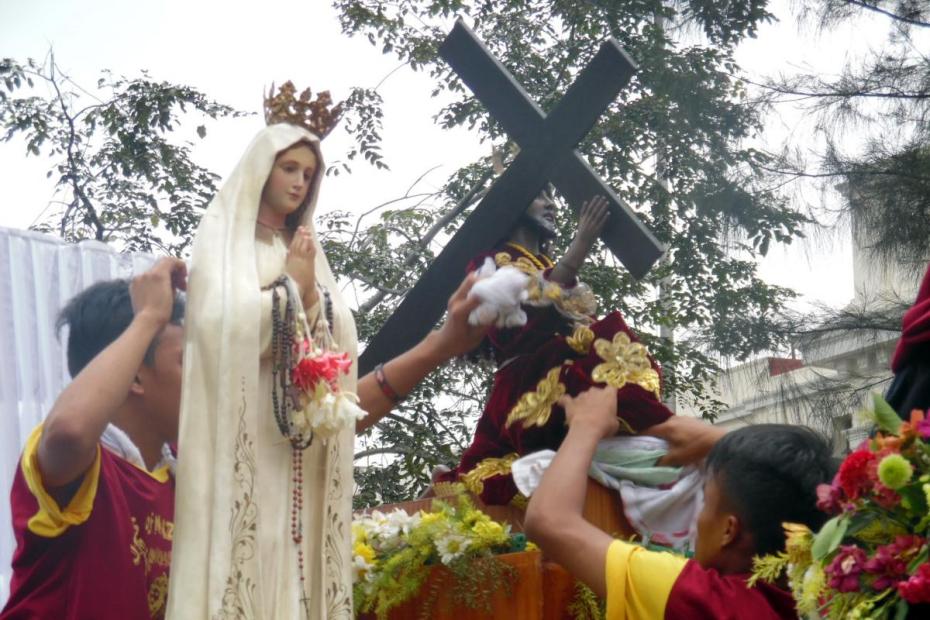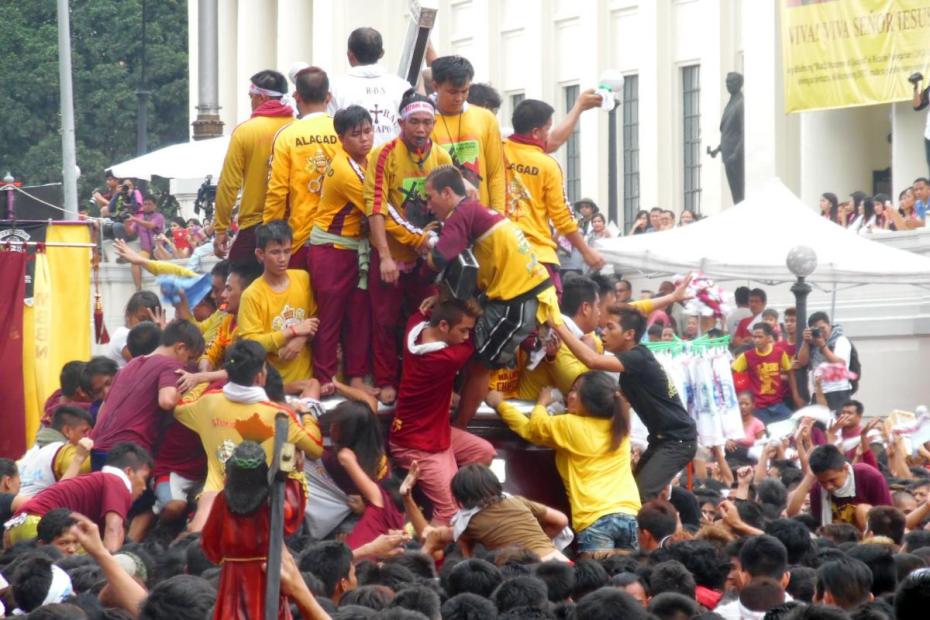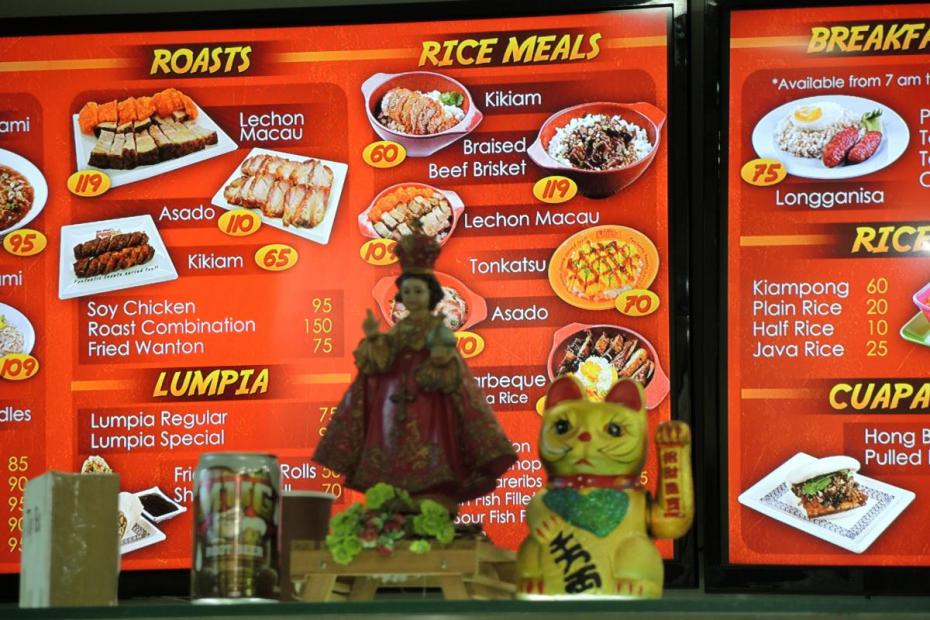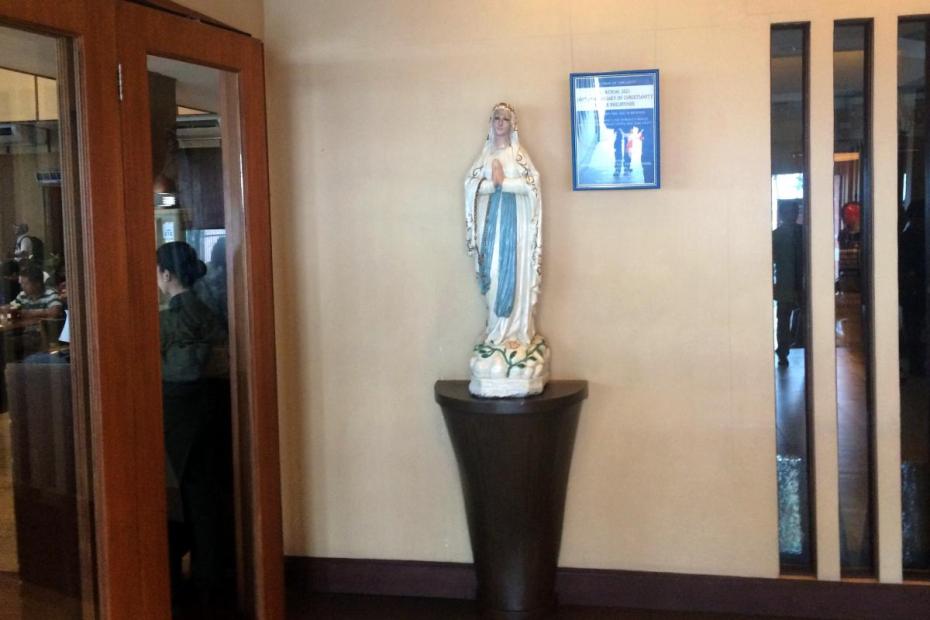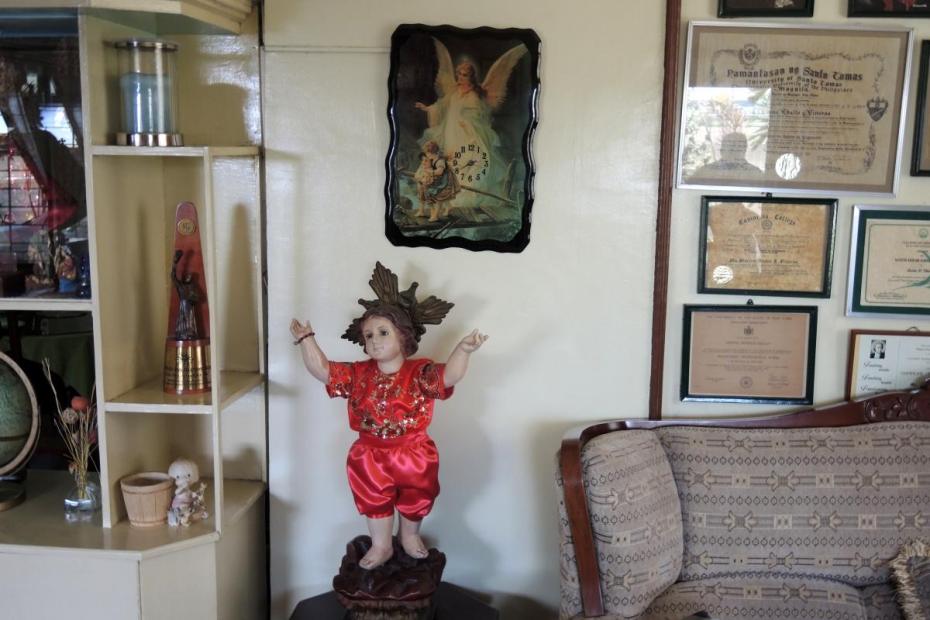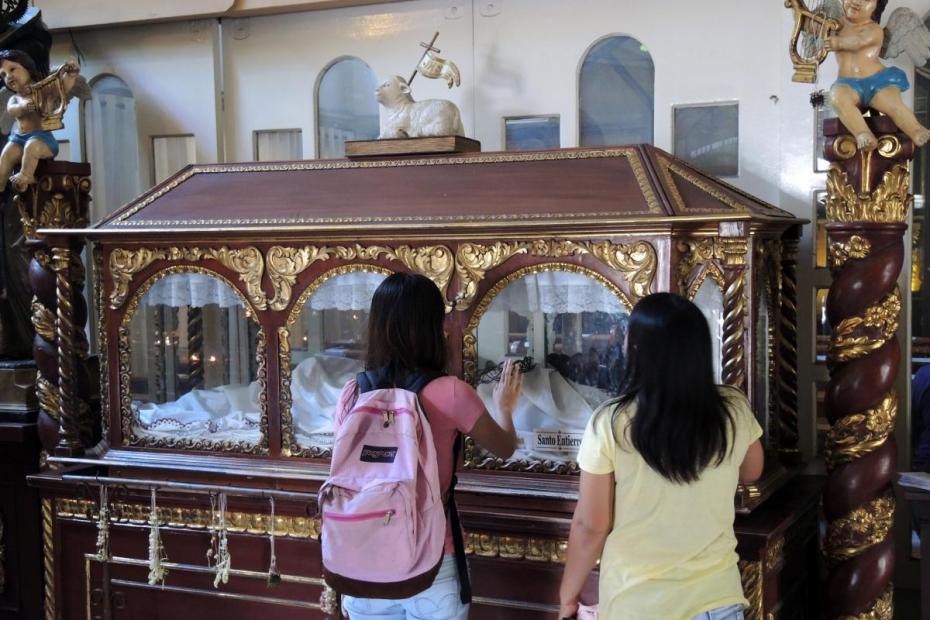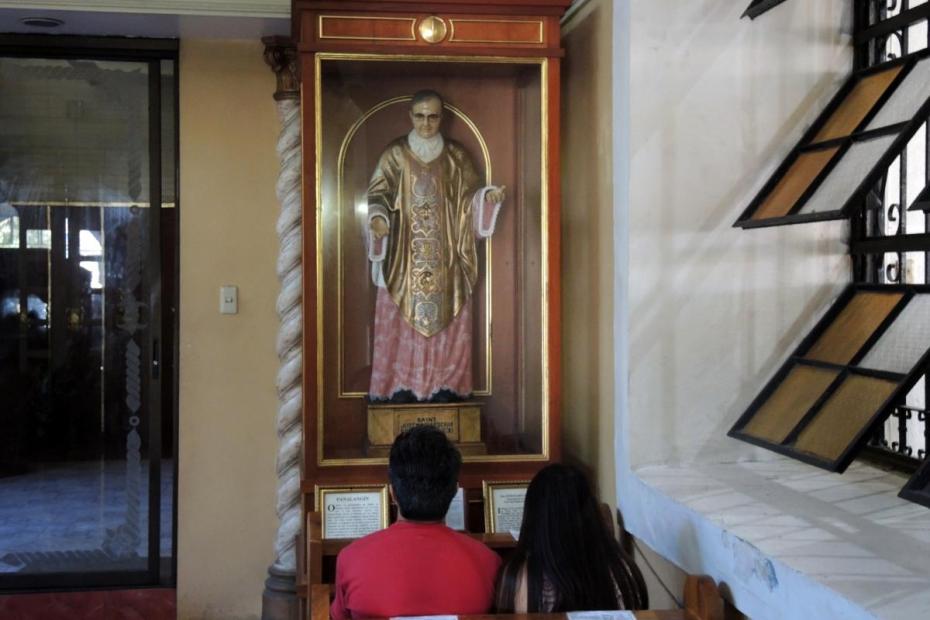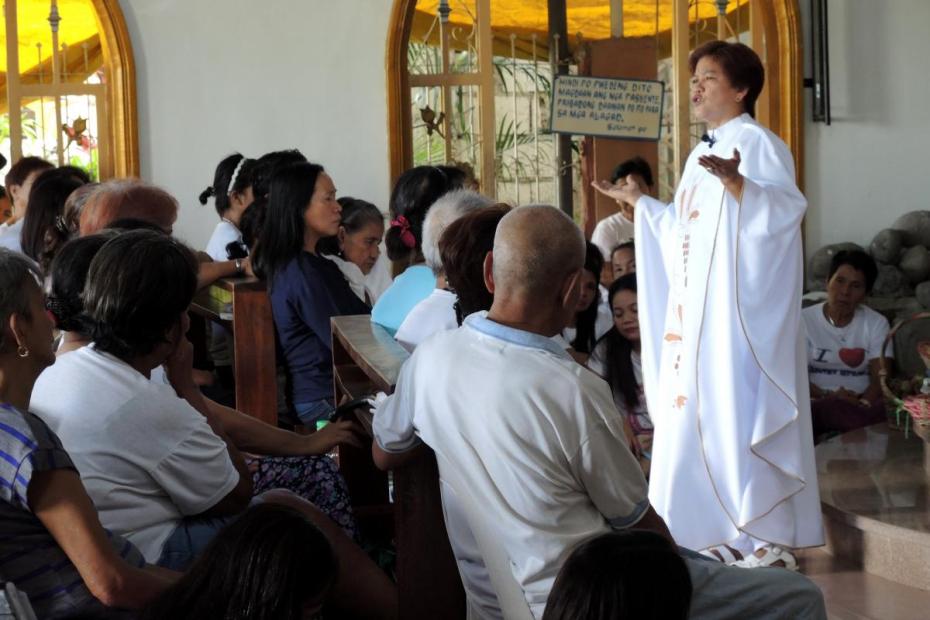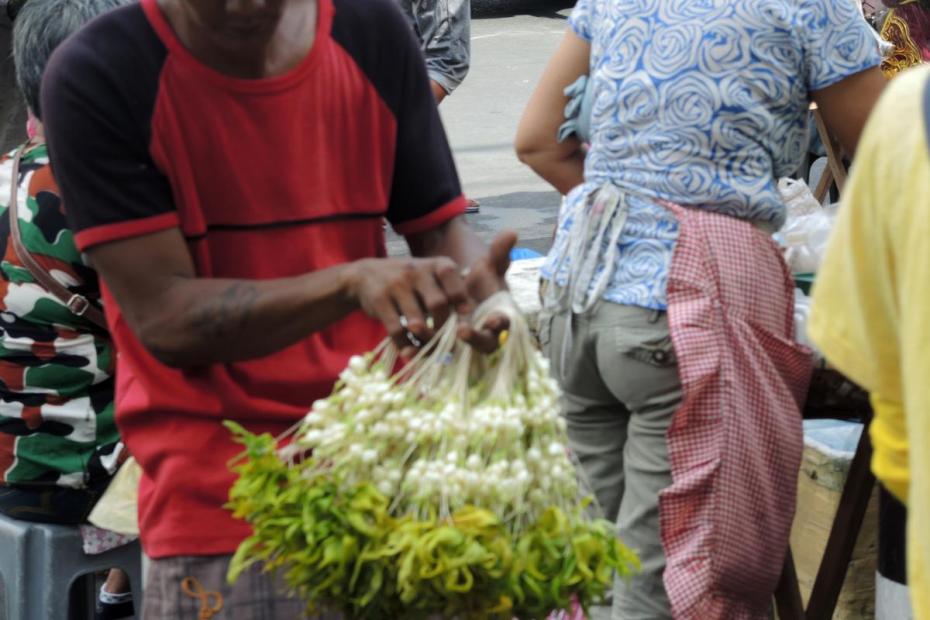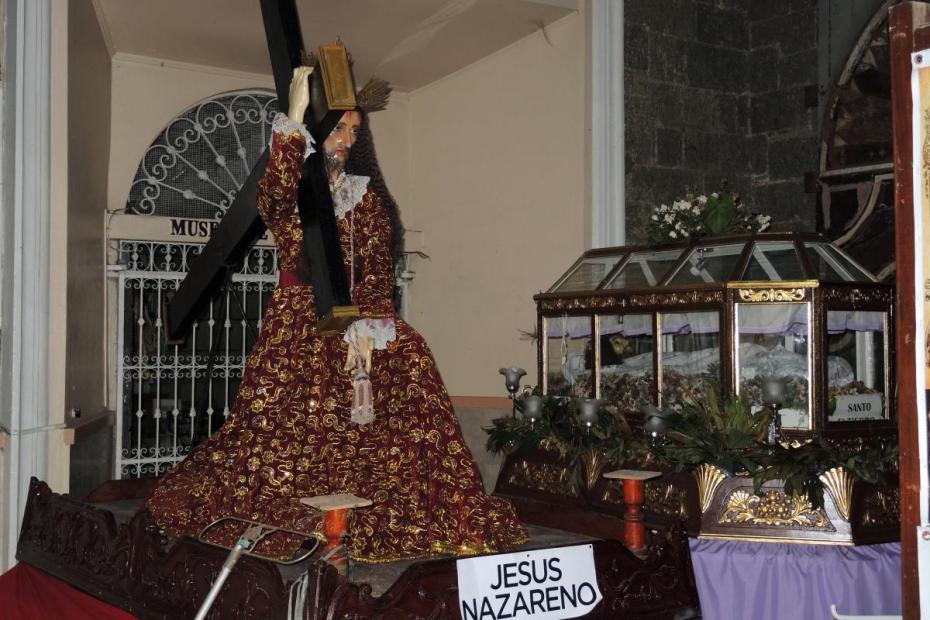With more than 80 million Catholics1 , the Philippines is home to the third largest Catholic population in the world. Filipinos comprise the great majority of Catholics in East Asia.2
While the Philippines is home to a broad range of Catholic practices, Filipinos stand out for their devotional fervor. Filipino Catholic practice is unusually material and physical, even among Catholic cultures, built especially on devotions to Mary, the suffering Christ, and the Santo Niño (Holy Child), and on powerful celebratory and penitential rituals practiced and experienced in a wide variety of Filipino vernacular forms. As one church leader described it, for 90% of Catholics practice is seasonal, though still very fervent, peaking especially at Good Friday, but also including major celebrations on feasts like Santo Niño and the Black Nazarene.
Notably, too, charismatic Catholicism, represented by movements like El Shaddai and Couples for Christ, has had a significant impact on Filipino Catholicism.
Filipino devotionalism and the Catholic charismatic movement both reflect a particular tendency toward the affective that distinguishes Filipino Catholicism. Appeal to emotion is primary in Filipino Catholic practice, and is evident in preaching, singing and devotions that connect deeply on that level. Images of Jesus in the country, it has been noted, focus on two extremes — on images of a playful but regal boy child, the Santo Niño, and on tragic images of the suffering, crucified Christ.3
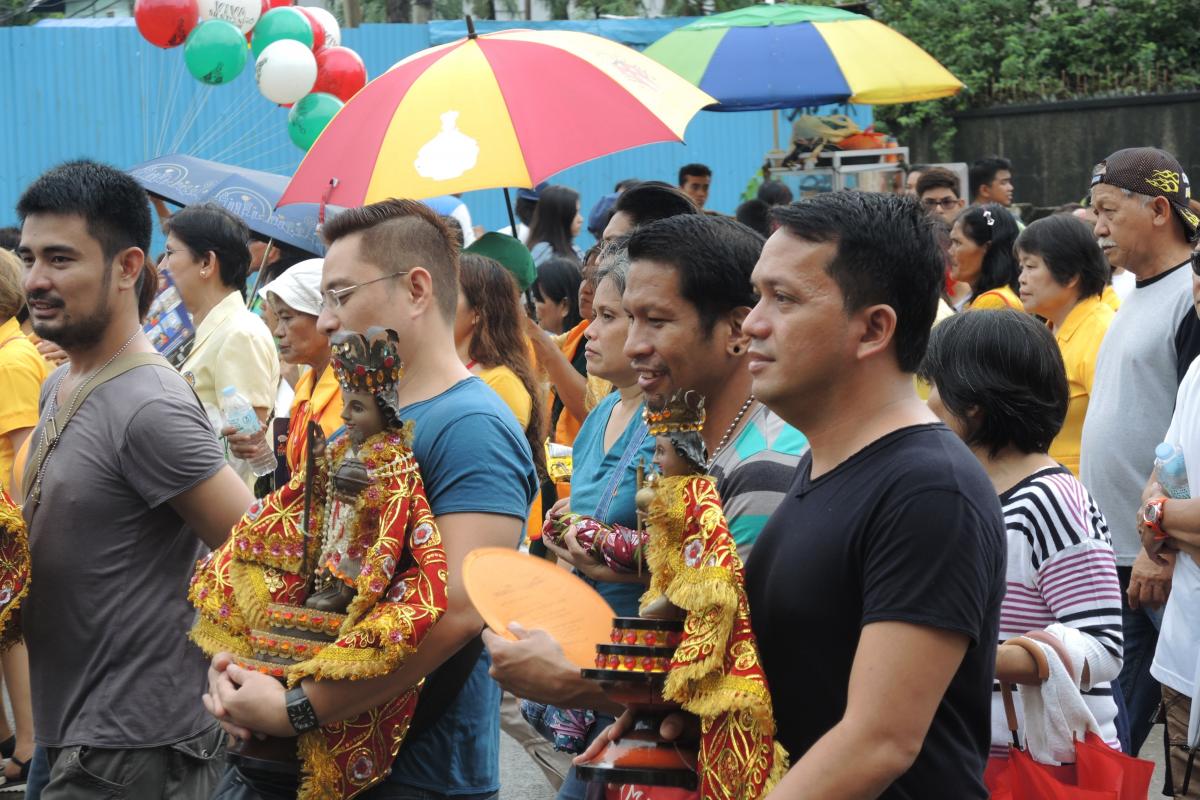
Filipinos carry their own images of Santo Niño in a procession during the feast in Cebu. Most Catholics, certainly almost all devotees, have at least one image of the Santo Niño in their home.
While some southern islands of the country are more heavily Muslim, the Philippines is overwhelmingly Christian. Catholics comprise 81% of the Philippine population, while other Christians belong to a variety of Protestant churches including the Philippine Independent, or Aglipayan Church, which broke away from the Catholic Church early in the 20th century, and whose worship is often Catholic in style. Catholicism has played an important role in defining the culture of the Philippines, both locally and nationally.
Church and state are formally separate, but in practical terms, church leaders have long played a powerful role both as insiders and as opposition. The Catholic hierarchy has played important roles twice in overturning highly corrupt presidents in 1986 and 2001. In other quite significant ways, however, it is difficult to see how Catholicism has positively impacted Filipino political life. Ordinary Filipinos often complain, with good reason, that corruption is endemic to politics, and complain about high levels of crime. And Filipinos have proven more than willing to turn aside bishops' perspectives in recent elections. As a candidate, the current president, Rodrigo Duterte, called the Church "the most hypocritical institution" in the Philippines, and called Pope Francis a "son of a whore."4 A majority Catholic country, tired of the rampages of drug addiction, elected Duterte specifically because of his promise to wipe out drug dealers. Despite a very public wave of extrajudicial killings, opposed by the bishops, support for Duterte remains high.
While we can speak meaningfully about a national Filipino culture and about Filipino Catholicism as a whole, it is important to acknowledge that there are significant variations in practice throughout the country. The Philippines comprise more than 2,000 inhabited islands, and large islands often have multiple provincial and local cultures. Historically speaking, Filipino Catholicism is shaped by local indigenous practices, and by the Spaniards who conquered it in the 16th century and ruled it for more than three centuries before the Americans took over during the first half of the 20th century.
Filipino religiosity is manifest not only in these islands but around the globe, though other countries' contexts can radically impact how it can be practiced. "Every year over a million temporary workers leave the Philippines to work overseas in an estimated 190 countries. They join roughly nine million Filipinos (8.7 million) who have already left the Philippines, making them one of the largest migrant populations in the world."5
Despite the intensity of religiosity in the Philippines, the ratio of clergy to lay people is quite low, ranking it at about the bottom 17th percentile among the world’s countries.6 Many parish mission churches see a priest only monthly, and everyday religiosity, in a particular way, is something that lay people foster and develop through practices that they direct.
- 1Statistical Yearbook of the Church, 2012. Vatican City: Librera Editrice Vaticana, 2014. As of 2010 the Philippine national statistics office puts the number a bit lower, at 74,211,896. A breakdown by province and a map of those statistics is available here.
- 2The Vatican statistics count Filipinos as more than 75% of East Asian Catholic populace, but these numbers do not take into account the number of Catholics in China, since these are not officially estimated by the Holy See.
- 3Douglas J. Elwood and Patricia Ling Magdamo first popularized this observation in their 1970s text, Christ in Philippine Context (Quezon City: New Day Publishers, 1971) a book that aimed to encourage Filipinos to expand their understanding of Jesus to focus on the adult life and teaching of Jesus.
- 4Enrico dela Cruz, "Philippine leader Duterte vents at 'hypocritical' Catholic church" Reuters, May 22, 2016. James Rothwell, "Philippines' president-elect Rodrigo Duterte refuses to apologise for calling Pope Francis a 'son of a whore'" The Telegraph, May 15, 2016.
- 5Stephen M. Cherry, Faith, Family and Filipino American Community Life, Rutgers University Press, 2014, p.16.
- 6Calculations based on statistics in the Statistical Yearbook of the Church, 2012. Vatican City: Librera Editrice Vaticana, 2014, pp. 102-109. Each country’s statistics are available on this site on the bottom of that country’s main page.
